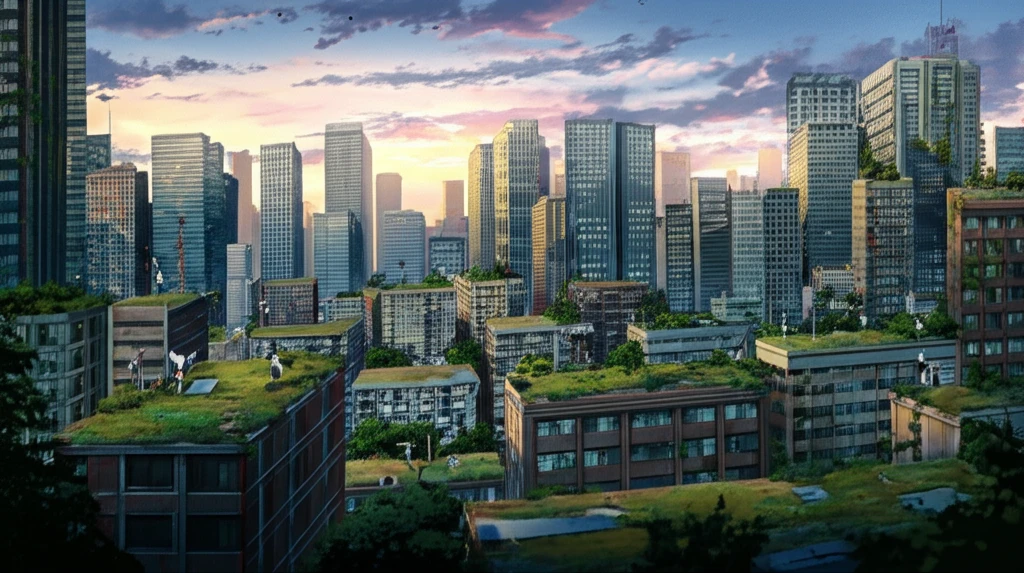
Green Roof Revolution: Transforming Cities for a Sustainable Future
"Discover how extensive green roof systems are reshaping urban landscapes, offering environmental and economic benefits for densely populated areas."
In an era defined by rapid urbanization and increasing environmental concerns, cities worldwide are seeking innovative solutions to mitigate the adverse effects of densely populated areas. Among the most promising strategies is the implementation of green roof systems, particularly extensive green roofs, which offer a multitude of benefits ranging from reducing urban heat islands to enhancing biodiversity.
Hong Kong, a city synonymous with towering skyscrapers and limited green space, serves as an ideal case study for exploring the potential of green roof technology. The city's unique challenges, including high population density and a subtropical climate, necessitate sustainable solutions that can effectively address environmental issues while maximizing land use efficiency. While green roofs have been introduced to Hong Kong since 2001, its adoption faces hurdles.
This article delves into the applications of extensive green roofs in contributing to sustainable development in densely populated cities, with a specific focus on Hong Kong. By examining the current practices, challenges, and opportunities associated with green roof implementation, it aims to provide insights into how cities can leverage this technology to create more livable, resilient, and environmentally friendly urban environments.
Extensive vs. Intensive Green Roofs: Choosing the Right System for Your Needs

Green roofs, characterized by a layer of vegetation atop a building's roof, are broadly classified into two main types: extensive and intensive. Understanding the distinctions between these systems is crucial for selecting the most appropriate option based on specific project goals and constraints. Extensive green roofs are lightweight systems designed for environmental benefits, while intensive green roofs resemble traditional gardens.
- Weight: Extensive green roofs are lighter than intensive green roofs, making them suitable for a wider range of buildings.
- Cost: The initial and ongoing costs associated with extensive green roofs are typically lower due to their simple design and minimal maintenance requirements.
- Maintenance: Extensive green roofs require minimal maintenance, primarily consisting of occasional weeding and fertilization.
- Plant Selection: Sedums and grasses are commonly used in extensive green roofs due to their drought tolerance and low growth habits.
- Accessibility: Extensive green roofs are generally inaccessible to the public, focusing on environmental benefits rather than recreational use.
Moving Forward: Realizing the Potential of Green Roofs
Extensive green roof systems hold immense promise for transforming urban landscapes and creating more sustainable cities. By embracing innovative policies, providing incentives, and fostering collaboration between government, industry, and the public, cities can unlock the full potential of green roofs and pave the way for a greener, more resilient future. As urbanization continues to accelerate, the widespread adoption of green infrastructure solutions like extensive green roofs will be essential for mitigating environmental challenges and enhancing the quality of life for urban dwellers.
